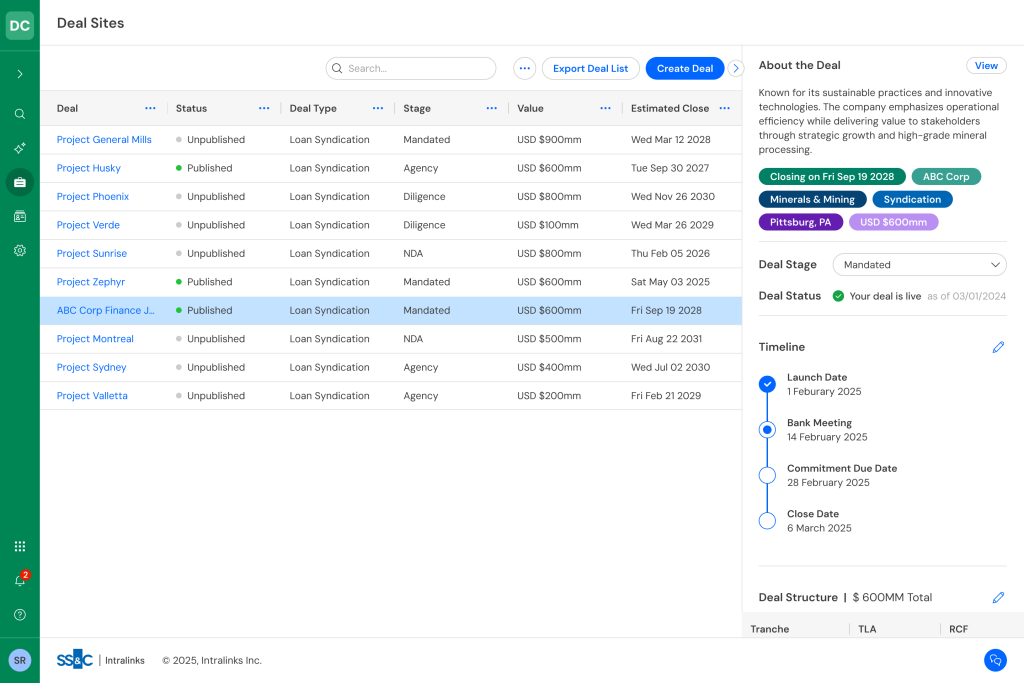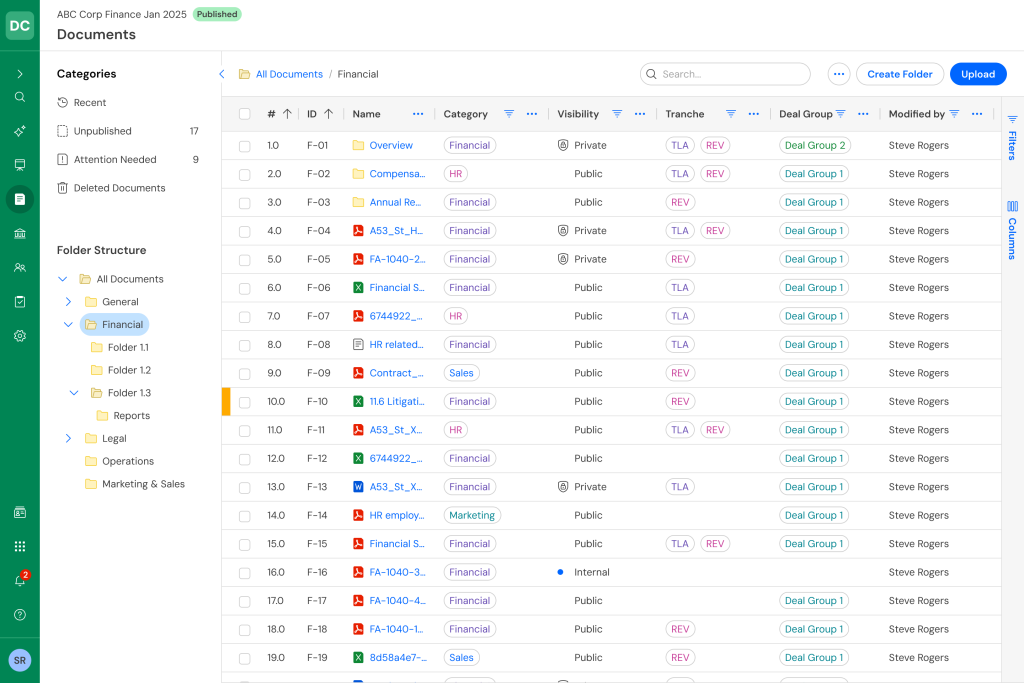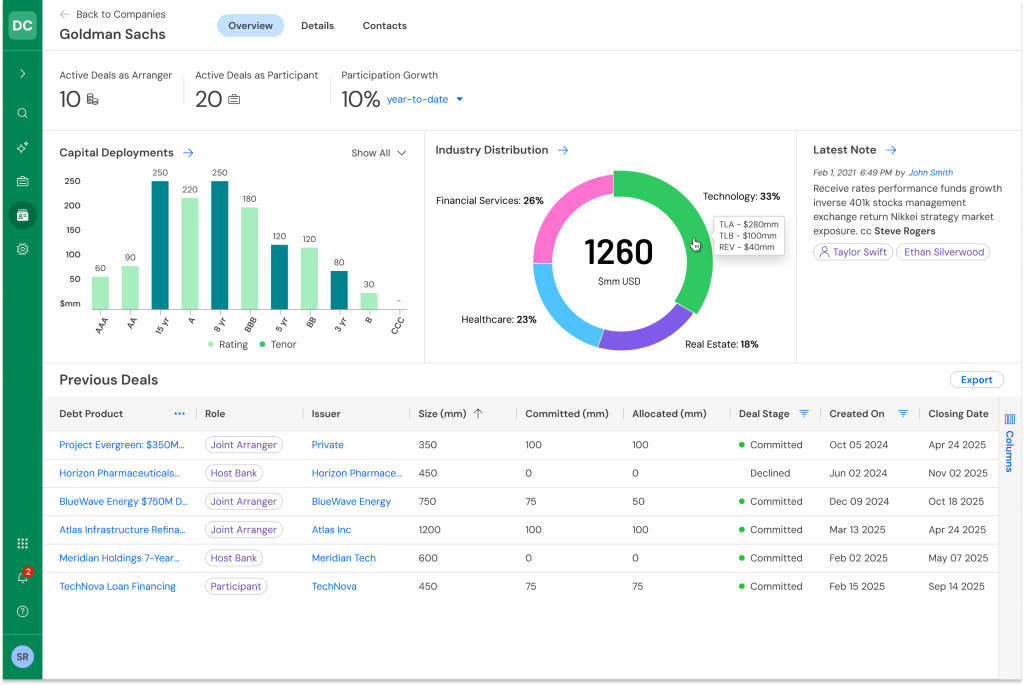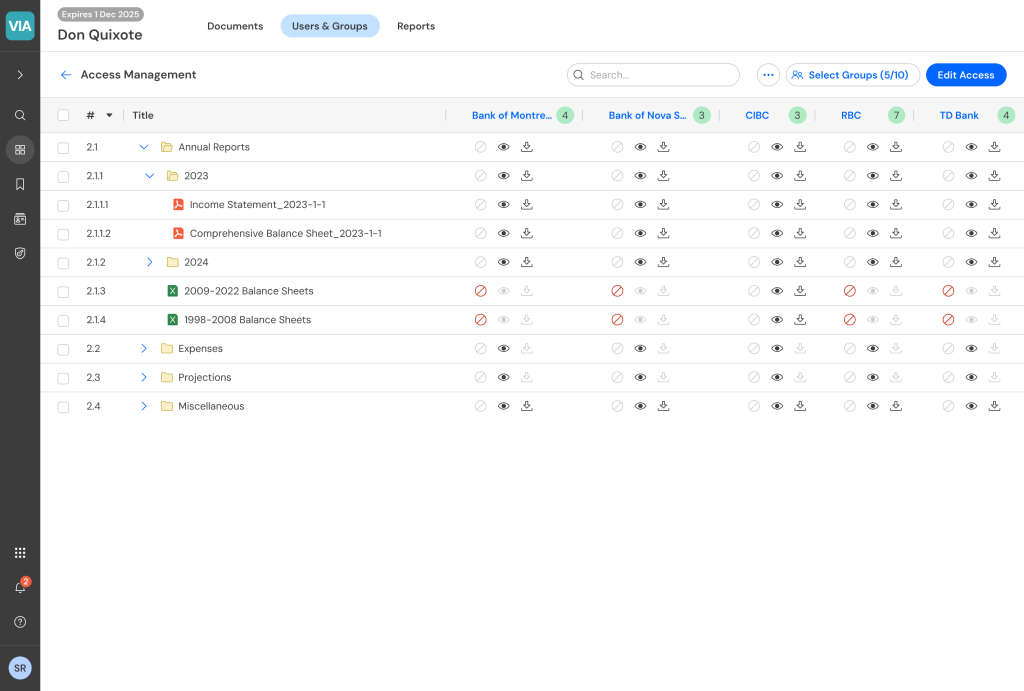Deal Making Platform
Or how research takes us to unexpected places
TL;DR
How it started
An exploration to open a new line of business with an under-utilized market segment.
How it ended up
Complete rebuild of our flagship product that better fit the mental model of our users.
Problem
M&A deal teams often track their deals using some sort of pipeline view, and so we assumed that it would be a good idea to pursue this as a new product offering.
A pipeline tool was an attractive revenue stream because it aligned with a subscription-based pricing model, as opposed to our core product, which is highly transactional.
However, we knew of several feature-rich, well-funded, M&A pipeline tools in the market, but initial quantitative research showed that MS Excel being used as a pipeline tool had overwhelming market-share over these existing products. Although this is a common pattern in the B2B space, we didn’t understand why this was true in ours.
Discovery
After several rounds of discovery and validation interviews, as well as some auxiliary quantitative surveying, we collected the following findings:
- Excel is extremely flexible when it comes to labeling and capturing data, and requires very little training to use.
- Due to it’s ubiquity, Excel is often used at a nominal cost.
- Deal teams use a wide range of tools to manage their pipeline
- These tools are imperfect, but “good enough”.
- Competitor products often seek to replace all aspects of a customer’s process.
We were able to conclude that customers are not experiencing enough pain to overcome the effort it would take for them to switch to a new tool, even if that tool was better.
Most unexpectedly, we learned that our core product, the data room, is considered just one part in an M&A process. This is a big problem, because the fundamental information architecture is expressed as the most important thing in M&A, and to all of our customers, the deal is the most important denominator.

Solution
With the results of our initial discovery, we re-framed our overall strategy to fit the following tenets:
- The deal is more important than our data room.
- Fit with a customer’s existing process, don’t replace it.
We knew that our core platform needed to be replaced, as it was difficult to maintain and improve. But, it was old enough that it would not be possible to execute on this strategy, so our recent discovery served as a useful catalyst to begin modernizing our deal making platform.
Below are some initial designs to show how all of the jobs-to-be-done around deal making could fit into a more user-centered architecture.


Using research, we also discovered net-new functionality that aligned with our strategy. Here is a wireflow diagram showing, a low-friction way for our customers to collect M&A documents from their clients without adding additional steps to their process.

Due to the potential for this product to disrupt our existing products, we implemented the following processes in and around the design and product teams:
- Radical transparency — Although it could be painful and slow, consistent and frequent collaboration with all R&D stakeholders saved us weeks or months of pain down the road.
- Always be learning — Monthly or bi-monthly research sessions with actual users. Historically this was difficult, and we over-relied on internal experts.
Results
When our product hit our pool of early adopters, we received uniquely positive signals to keep going. As such, the business threw more resources behind our effort, and several other designers and teams shifted their focus to begin collaborating on our new platform. My responsibilities shifted to include onboarding new designers and carrying the original vision we laid out.
Furthermore, the momentum we started has deepened our team’s reputation as active collaborators and researchers.
After our initial MVP, we went on to further refine the visual look and feel:




